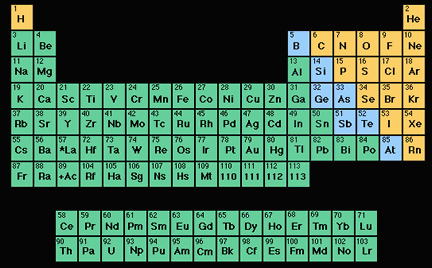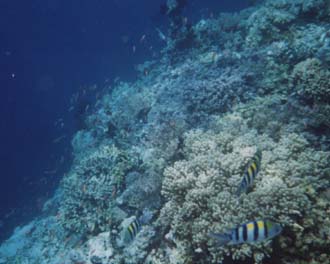The Carbon Cycle
Carbon is an element. It is part of oceans, air, rocks, soil and all living things. Carbon doesn’t stay in one place. It is always on the move!
- Carbon moves from the atmosphere to plants.
In the atmosphere, carbon is attached to oxygen in a gas called carbon dioxide (CO2). With the help of the Sun, through the process of photosynthesis, carbon dioxide is pulled from the air to make plant food from carbon. - Carbon moves from plants to animals.
Through food chains, the carbon that is in plants moves to the animals that eat them. Animals that eat other animals get the carbon from their food too. - Carbon moves from plants and animals to the ground.
When plants and animals die, their bodies, wood and leaves decay bringing the carbon into the ground. Some become buried miles underground and will become fossil fuels in millions and millions of years. - Carbon moves from living things to the atmosphere.
Each time you exhale, you are releasing carbon dioxide gas (CO2) into the atmosphere. Animals and plants get rid of carbon dioxide gas through a process called respiration. - Carbon moves from fossil fuels to the atmosphere when fuels
are burned.
When humans burn fossil fuels to power factories, power plants, cars and trucks, most of the carbon quickly enters the atmosphere as carbon dioxide gas. Each year, five and a half billion tons of carbon is released by burning fossil fuels. That’s the weight of 100 million adult African elephants! Of the huge amount of carbon that is released from fuels, 3.3 billion tons enters the atmosphere and most of the rest becomes dissolved in seawater. - Carbon moves from the atmosphere to the oceans.
The oceans, and other bodies of water, soak up some carbon from the atmosphere.
Carbon dioxide is a greenhouse gas and traps heat in the atmosphere. Without
it and other greenhouse gases, Earth would be a frozen world. But humans have
burned so much fuel that there is about 30% more carbon dioxide in the air today
than there was about 150 years ago. The atmosphere has not held this much carbon
for at least 420,000 years according to data from ice cores. More greenhouse
gases such as carbon dioxide in our atmosphere are causing our planet to become
warmer.
Carbon moves through our planet over longer time scales as well. For example, over millions of years weathering of rocks on land can add carbon to surface water which eventually runs off to the ocean. Over long time scales, carbon is removed from seawater when the shells and bones of marine animals and plankton collect on the sea floor. These shells and bones are made of limestone, which contains carbon. When they are deposited on the sea floor, carbon is stored from the rest of the carbon cycle for some amount of time. The amount of limestone deposited in the ocean depends somewhat on the amount of warm, tropical, shallow oceans on the planet because this is where prolific limestone-producing organisms such as corals live. The carbon can be released back to the atmosphere if the limestone melts or is metamorphosed in a subduction zone.
![]() You can get your own minerals and fossils, as well as publications including issues of the National Earth Science Teachers Association Journal, The Earth Scientist, on rocks and minerals (Fall 2010), the ocean (Spring 2010), and Earth System science (Winter 2009) in our online store!
You can get your own minerals and fossils, as well as publications including issues of the National Earth Science Teachers Association Journal, The Earth Scientist, on rocks and minerals (Fall 2010), the ocean (Spring 2010), and Earth System science (Winter 2009) in our online store!















